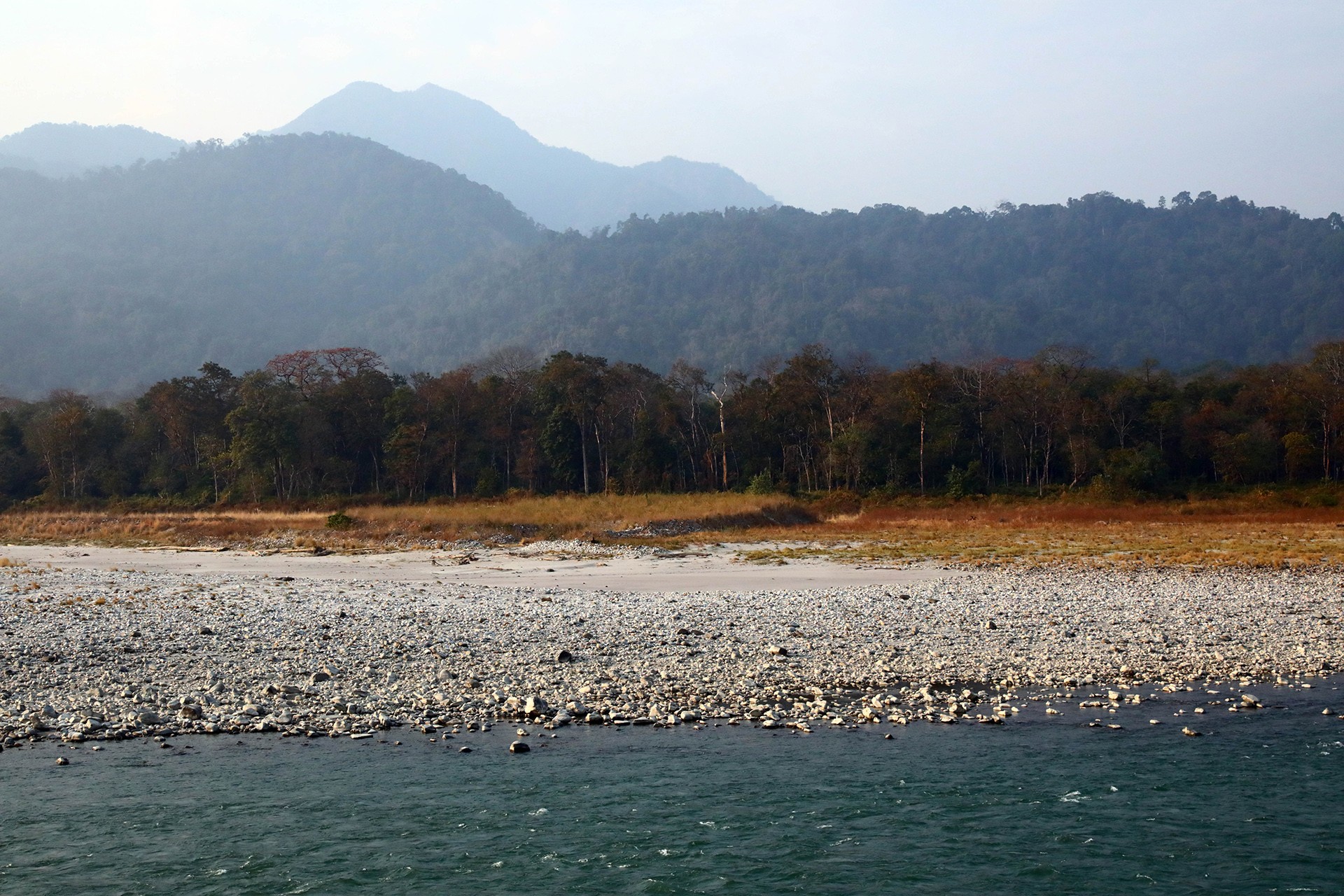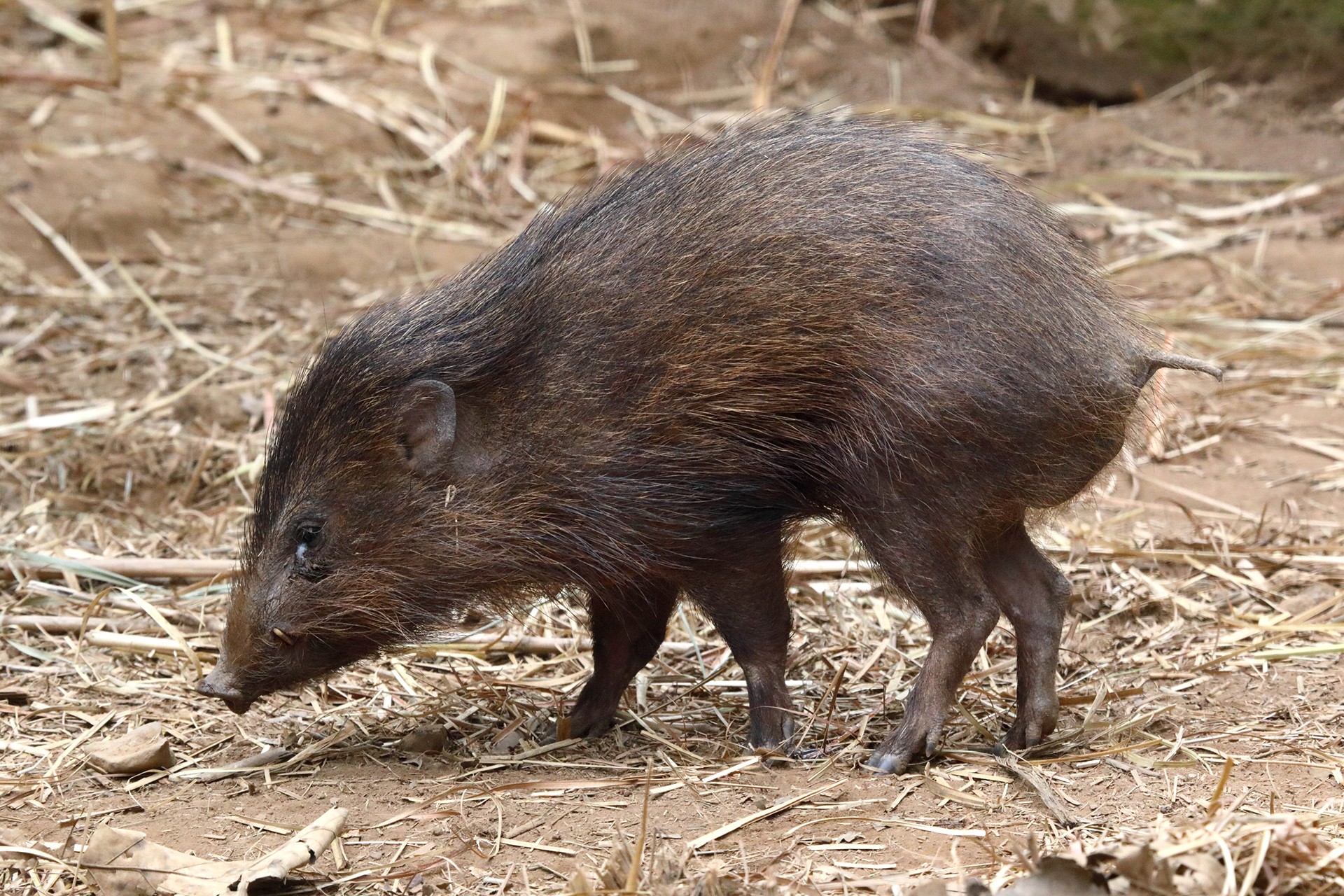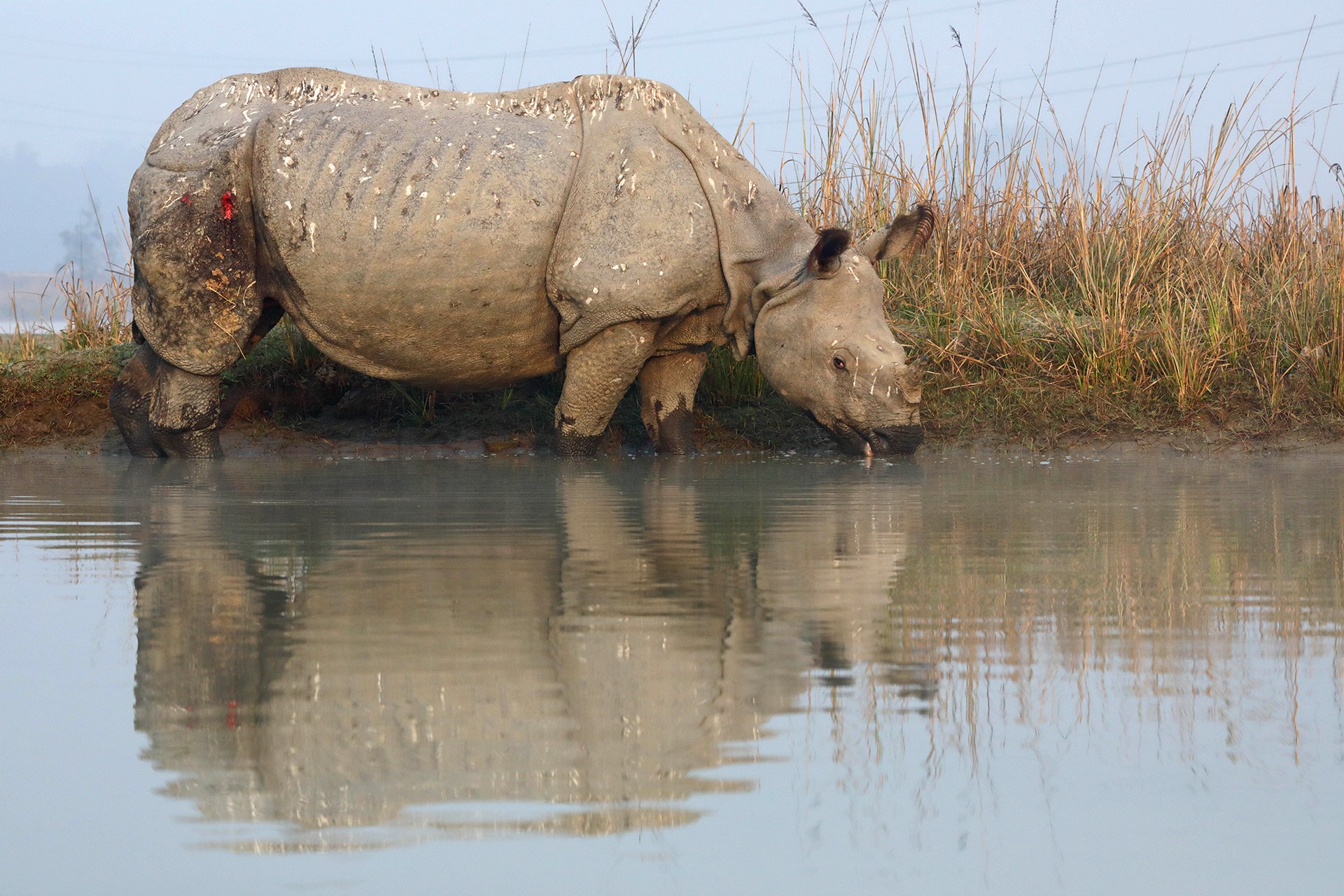There’s a conservation coup taking place in the state of Assam, in northeast India. A band of scientists and NGOs in partnership with the State Forest Department are moving rhinos around from one protected area to another, quite like a game of chess. But what might seem like a random game has a method and a science to it. Earlier this year, I travelled across the state to document these radical changes.
The habitat of the Indian Rhino once extended from Pakistan into northern India and modern-day Myanmar, reaching into Nepal, Bangladesh and Bhutan. However, the loss of large tracts of habitat and extensive poaching for its horn – believed to have medicinal properties – led to its extinction in all these countries, except India and Nepal.
Back in 1975, the numbers had plummeted to a mere 600 in the wild; today, India and Nepal have over 3,500 rhinos in different protected areas. Assam, in spite of years of rampant poaching, is currently the proud host to more than two-thirds of the global population of the One-horned Rhino (Rhinoceros unicornis). An estimated population of around 2,500 One-Horned Rhinos are in Kaziranga alone.
Under the aegis of the IRV 2020 (Indo-Rhino Vision 2020), a coordinated conservation policy that began in April 2008, one-horned pachyderms are being shifted out from national parks such as Kaziranga, where they number in plenty, to other lesser-known protected areas where the twin pressures of insurgency and poaching have wiped out local populations.
The idea is to attain a wild population of at least 3,000 Greater One-Horned Rhinos spread over seven protected areas in Assam, by 2020.
Restocking Manas – Conservation in Waves
Topping the revival story is world heritage site Manas, whose fate bends and twists quite like the river ‘Manasa’ or the ‘Serene Goddess’ from which the Park gets its name. In the period between 1997 and 2002, Manas almost lost its status as a world heritage site after a period of internal strife with separatists demanding an autonomous Bodoland. It lost its entire population of One-Horned Rhinos and half of its tigers . Only after a ceasefire with the Bodo millitants could the stage be set for the revival of conservation in Manas.
From 2008 to 2012, 18 Indian rhinos were moved from Pobitara Wildlife Sanctuary and Kaziranga National Park to Manas National Park as part of IRV 2020. An additional eight rhinos were moved to Manas by the Centre for Wildlife Rehabilitation and Conservation, run by the NGO Wildlife Trust of India, in collaboration with the Assam Forest Department.
In 2012, one of the translocated female rhinos gave birth to the first calf born in Manas. Since then, eleven more rhinos calves were born – a sure sign that the translocated animals were adapting well to their new home. Unfortunately, the translocated population was tragically poached. After losing eight animals, IRV 2020 halted rhino translocations to Manas in 2013, and focused on improving security.
Training in new patrolling methods, along with the support of new park leadership has made a big difference – only one rhino was lost to poaching in Manas in 2014, and the current population of 31 translocated rhinos and new calves continues to thrive.
In January this year, when I visited, hopes were high; there had been a lull in poaching, although the reintroduction of any more rhinos continues to be stalled, due to the poaching cases in recent years.
Amit Sharma, the Senior Coordinator for the rhino project from WWF-India, accompanied me on the trip. While conservationists such as Sharma are hopeful, they also know that the battle is never really over. “You see, poaching in Manas is cyclical, it comes and goes in waves,” he said. Right now, on my maiden visit to the park, the world heritage site is riding the peace wave. Just recently, its famous green hero, Bibhuti Lakhdar, was awarded the IUCN award for restoring the landscape here. Kaziranga’s most famous forester, Dhami Dar Boro, the hero of many wildlife documentaries, was recently appointed as an OSD (Officer on Special Duty) to the Bodo Tribal Council in charge of the park, in recognition of his decades of experience in protecting rhinos.
When I met him, Boro flashed his famous friendly smile and said he was happy to be back among his people, even though he enjoyed the limelight for thirty years in Kaziranga. His smile reflected an optimism that is shared by many – from the WWF staff to the forest guards – but it is an optimism that is laced with caution. This was also reflected by the park director, HK Sharma, who knows it may be too soon to call Manas a success story of conservation. In many ways, he echoed Amit Sharma’s views: the threat of poaching is always present; he operates under several constraints; many posts in the forest staff are lying empty. Who wants to leave their families to take a post deep in the jungle, he asked me.
Out in the park, I spent several days moving around in the noisy jeep searching for the big five: rhinos, tigers, wild buffaloes, gaur and elephants. I am personally more interested in the smaller species – Manas is the last stronghold of the wild populations of Pygmy Hog – the smallest pig in the world. Sadly, these days it is virtually impossible to see. At one of the watchtowers, there were reports of sighting of the Lesser Bengal Florican, but it was too far away for me to sight even as I squinted through the binoculars.
We were staying at the forest rest house in Mathangudi. Bhutan, the happiest country in the world, was just on the other side of the Manasa River. On the drive back, we saw a nightjar sitting stubbornly on the road like an agitating protestor, a male wild boar scurrying off into the bush, and a herd of Gaur chewing their last meal for the day.
I spent another day driving through the park encountering wildlife, stopping at lonely forest watchtowers, and chatting with the frontline staff engaged with this onerous task of protecting the unicorns of Manas. At each stop, I would gulp down black tea laced with lots of sugar. Milk is a rarity in these remote parts, but it’s a minor quibble compared to what these are forest guards are up against. There are physical hardships: the risk of being hit by stray gunfire, patrolling in tall grasses shrouded in mist with very little visibility. As the park director HK Sharma had pointed out, there’s also the psychological hardship of being away from their families for weeks on end, living in isolation in these wooden watchtowers. It is the story of hundreds of Indian soldiers as well, except no one knows about the foot soldiers of our forests.
Pobitara National Park
Pobitara National Park is home to around 90 rhinos – as in Kaziranga, the park’s carrying capacity has been exceeded, which heightens the chances of rhino-human conflict as animals move out of the park and into agricultural areas to forage for food. As part of the IRV 2020, rhinos from Pobitara were also translocated to Manas.
I stopped at Pobitara after visiting Manas. Just 50km from Guwahati city, it is often a day trip for picnickers. It’s clear to see that the park is a wildlife photographer’s delight – it is easily accessed from the city and the open grasslands make visibility easier. But the threat of poaching looms large here as well.
Orang National Park
My last stop on this quest to chase the rhino across Assam was Rajiv Gandhi Orang National Park, almost 150 km from Guwahati. One of Assam’s oldest yet least known Protected Areas, Orang is largely swampy, with thick grasslands, and is situated on the north bank of the Brahmaputra. Inside, it was like Jurassic Park revisited. The grasslands were covered in a white early-morning mist, as our jeep pushed against giant grass species on either side.
The forest provided much-needed relief after the dust-laden journey from Manas. The quaint little guesthouse inside the park was a welcome pitstop, providing a panoramic view of the entire park once the fog lifted. From this vantage point, we saw a rhino munching on his morning breakfast. The Park is home to over 60-80 rhinos and, like Manas, is part of the IRV 2020 efforts that focus on creating new protected areas for the animals.
Why saving grasslands is so important
It is important to remember that saving the rhino is not just about saving one protected area. Their habitat – one of the last stands of grasslands – is home to some of the last surviving population of species that have almost gone extinct. It’s not just rhinos. Floricans, Pygmy Hogs and the now-thought-to-be-almost-extinct Hispid Hare are the star cast of these fast disappearing grasslands. From fast multiplying weeds to agricultural spread, there are a complex set of reasons why grasslands are disappearing.
One of the main factors for their disappearance was the forest department’s obsession to replace grasslands with forests by planting trees. Another big threat to the grasslands in Assam is invasive weeds. For instance, one-fifth of the grassland in Manas National Park has been impacted by invasive plant species such as Mikania micrantha (Mikania) and Chromolaena odorata (Chromolaena), considered to be two of the world's most invasive plants. These species are from South America and were introduced into India early last century, either for ornamental or agricultural purposes. They are fast growing and capable of taking over the landscape quite rapidly, making eradication very difficult. Both plants also inhibit the growth of native species of plants.
Rewilding experiments like the IRV 2020 need to focus not just on reintroducing the animals, but also on saving their habitat – in this case, the grasslands. For a tree-obsessed forest department, this has meant an entire reorientation of their mindset. Restoration ecology, at least in Assam, is about bringing back the grasslands (quite often, this means uprooting trees to back grassland ecology).
Scientists who have studied the feeding habits of the One-Horned Rhino found that the species feeds on 75 species of grasses, 27 species of herbs and shrubs, 27 species of trees, and 9 species of aquatic plants species. Grasses constitute 86.66% of the total annual diet of rhino, while aquatic plants and woodland species constitute only 13.34% of their total annual diet.
That is why, if we are to save the rhino, it is the grasslands that must be saved.
This Save the Rhino Day, perhaps it is time to remind ourselves that the rhino’s grassland habitat is as threatened as the species it is home to. If we can save our grasslands, we can save not just the rhino, but also other lesser-known like the Hispid Hare and the Pygmy Hog.




